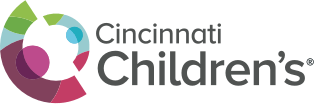Head and Shoulder Injuries
A concussion is a brain injury from a direct blow to the head, face, neck or body where a force is transferred to the brain.
Your child should be evaluated right away if they have a loss of consciousness, change in mental status, repeated episodes of vomiting, loss of coordination, or slurred speech.
Visit the Brain Health and Wellness Center to learn more about concussion recovery.
The labrum is a ring of cartilage that goes around the ball and socket joint of the shoulder. The labrum can be injured when the shoulder dislocates or pops out of socket.
When injured, the labrum doesn't always heal well on its own. At Cincinnati Children's, sports medicine doctors will evaluate your child's shoulder to determine whether the labrum is injured or not. In many cases, labral tears require surgery.
Little league shoulder is an overuse injury caused by stress to the arm bone (humerus) nearest to the shoulder. This stress causes widening of the growth plate, resulting in swelling and pain at the shoulder.
Symptoms of little league shoulder include pain in the shoulder with pitching or throwing, pain with the shoulder at rest or with lifting the arm, and decreased throwing speed and/or accuracy.
If you suspect that your child has little league shoulder, a trip to the doctor is necessary to diagnose the condition and start physical therapy.
Multidirectional instability of the shoulder occurs when the shoulder gets damaged in more than one plan of motion or the shoulder is generalized as “loose”. Pain, swelling, and lack of confidence in the shoulder are common indicators.
A trip to the doctor is necessary for multidirectional instability of the shoulder as an x-ray and possible MRI are needed for diagnosis.
The rotator cuff is a group of four muscles in your shoulder that go from your shoulder blade to your arm.
Injuries to the rotator cuff are most often caused by overuse or poor form, but sometimes come from a traumatic injury.
Pain in the shoulder and shoulder blade, weakness in the shoulder, pain with overhead activity, and loss of shoulder motion indicate a rotator cuff injury.
Call the doctor if the athlete’s pain is not resolving, you see decreased shoulder strength or difficulty reaching overhead, or there is any numbness or tingling in the upper arm.
In general, most shoulder dislocations are caused by landing on an out stretched arm, or a direct force to the shoulder when the arm is overhead. A partial dislocation, or subluxation, means that the head of the humerus quickly comes out of the shoulder socket and spontaneously goes back to normal position. A complete dislocation occurs when the head of the humerus comes completely out of the socket and either spontaneously reduces or needs to be reduced by a medical professional.
Call the doctor for a shoulder dislocation if your child has a noticeable shoulder deformity, is unable to move their arm, is complaining of weakness, numbness, or tingling, or has discoloration, change in sensation or temperature of the upper arm.
Most AC joint injuries are caused by a direct fall or blow to the shoulder with the arm in an adducted (next to the body) position, such as a fall from a bicycle. Acromioclavicular injuries are relatively common in contact sports or from athletes falling directly on their shoulder.
Call the doctor for shoulder separation if your child is experiencing moderate to severe shoulder pain while trying to lift arm across or away from body, pain with day-to-day tasks (i.e. getting dressed, lifting backpack, using arm), any deformity or unusual appearance of shoulder compared to non-injured shoulder, inability to sleep or put pressure on shoulder, or are unable to move the injured arm.
A sprain is when one or more ligaments in a joint become torn or stretched beyond its normal limits.
A strain, more commonly called a pulled muscle, is an injury to muscle fibers or tendon due to excessive force and stretching.
Sprains and strains may be caused from falls, direct forces or blows, improper warm-up leading to over stretching tissues, and inadequate rest between sport practices and competitions.
You should call the doctor for a sprain or strain if your child has severe pain and cannot put any weight on the injured joint or move it, the injured area looks different compared to the uninjured side, or has numbness in any part of the injured area.



